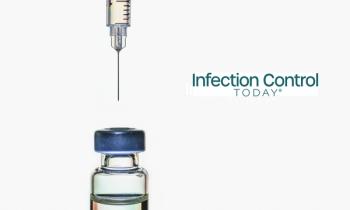
How Cleaning Medical Equipment Directly Affects Patient Safety and Equipment Longevity
Hospital-associated infections affect over 1 million US patients annually. Proper medical equipment cleaning and sterilization significantly reduce infection risks, improving patient outcomes and safety.
Let’s say I have a friend named George. George is finally recovering from his surgery last week. Unexpectedly, a week later, he developed a severe illness, causing him another week of hospital stay, going through the pain again, not to mention the additional expenses. At first thought, you may consider George caught the common cold going around or food poisoning.
But have you considered the possibility that George developed an infection because the hospital’s medical equipment was not cleaned thoroughly?
Sadly, this scenario is more common in the health care industry than we think. Each year, more than
Regular and thorough cleaning helps prevent the spread of multidrug-resistant organisms (MDROs), ensuring a safer environment for patients and health care professionals. A study published in the Journal of Hospital Infection supports this, highlighting that hospitals with stringent equipment cleaning protocols had a
The Importance of Cleaning Medical Equipment
A simple routine of cleaning medical equipment in health care settings—from wiping down beds to sterilizing surgical instruments—reduces the spread of disease and bacteria, but that is not enough. Professional routine device and equipment maintenance is critical for utmost patient safety. Health care-associated infections (HAIs), such as sepsis, are
Did you know hospitals and health care providers are often incentivized to maintain high standards of cleanliness through regulatory fines? Although the penalties serve as a combative measure, the primary motivation for health care providers should always be the safety and well-being of patients. After all, fines exist to underscore the importance of these practices.
Pathogens, including bacteria, viruses, and fungi, can survive on surfaces for varying durations. Some bacteria can even live on surfaces for weeks.
Sterilization processes are critical for invasive medical equipment, such as those used in operating rooms (ORs). The FDA reports that although sterilization failure rates are low, they still happen, which calls for rigorous quality control measures to make sure that sterilizers function correctly and that medical instruments are thoroughly cleaned and sterilized before use, especially anything that comes into contact with unclean or improperly disinfected equipment can potentially spread infections, particularly in environments like ORs.
Best Practices in Medical Equipment Cleaning
- Use proper disinfectants: Choose EPA-approved disinfectants suitable for health care settings. These should be effective against a wide range of pathogens.
- Follow manufacturer guidelines: Always adhere to the cleaning instructions provided by equipment manufacturers. These guidelines are specifically designed to ensure the equipment's longevity and effectiveness.
- Implement cleaning schedules: Regular cleaning schedules help maintain consistency. High-touch surfaces and frequently used equipment may require more frequent disinfection.
- Water line maintenance: Maintaining clean water lines is crucial in fields like dentistry and dialysis. Contaminated water can significantly impact patient care and lead to severe health issues.
A perfect example is dialysis machines. This equipment uses large volumes of water to clean patients' blood. Regulations around water filtration systems, purifiers, and maintenance documentation are stringent to prevent contamination in any possible manner. Similarly, dental equipment must be meticulously cleaned to prevent oral systemic infections that can lead to broader oral health problems. Another example of emphasis is in high-traffic areas like urgent care centers or hospital X-ray rooms. Pieces of equipment in these practice areas are constantly used, which requires thorough cleaning after each patient interaction.
Proper cleaning protocols directly impact patient safety, whether in general medicine or dental practice. In contrast, though, equipment in less busy settings may not need as frequent disinfection but still demands regular maintenance and general care based on usage to prolong equipment lifespan.
A Safer Environment Through Proactive Efforts
Medical cleaning practices should not be debated; they should be nonnegotiable aspects of health care, from preventing life-threatening infections to extending the lifespan of valuable medical devices. Above all, proactive cleaning measures can save practices thousands of dollars from equipment downtime.
Managing multiple offices as a physician can be overwhelming, especially when keeping track of all your equipment. Fortunately, technological solutions and third-party services are available to centralize this information. These tools not only organize your equipment inventory but also send reminders for routine check-ups and professional cleanings, helping to maintain sterile conditions and ensure patient safety.
Health care providers, medical equipment managers, and infection control specialists must prioritize equipment cleaning as part of their daily commitment to patient safety and operational efficiency. By leveraging best practices in advanced cleaning technologies and staying informed about industry standards, health care facilities can provide safer environments for their patients and staff.
Implement rigorous cleaning schedules and adopt cutting-edge disinfection technologies, either by purchasing your own or choosing a subscription-based option, to make patient safety your top priority. Exercise conscious and proactive efforts to create a safer, healthier future for everyone.
Newsletter
Stay prepared and protected with Infection Control Today's newsletter, delivering essential updates, best practices, and expert insights for infection preventionists.






